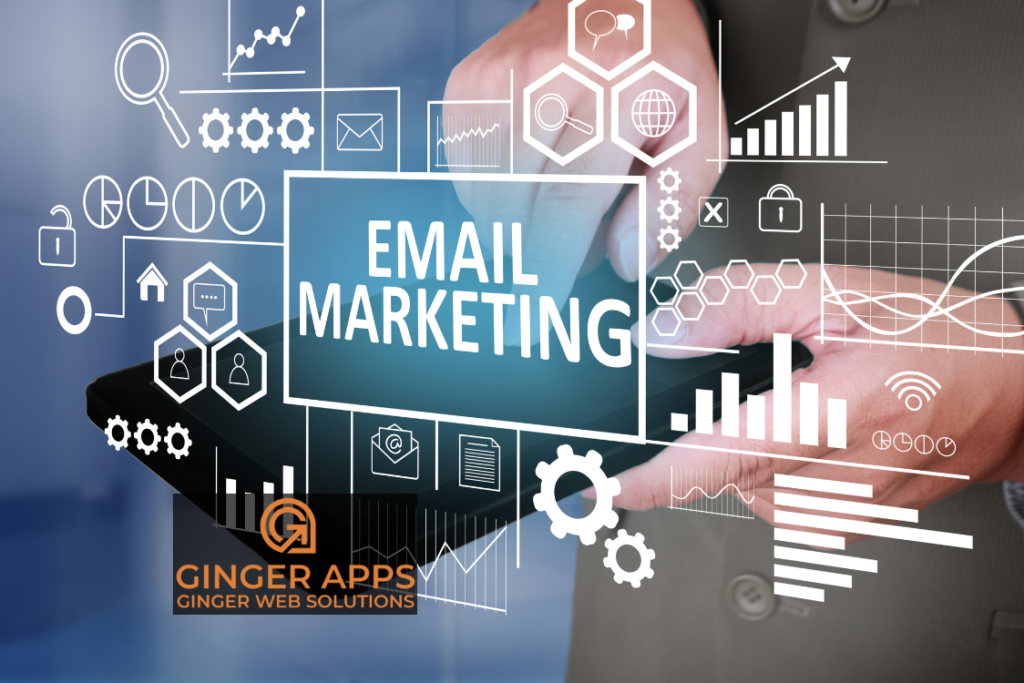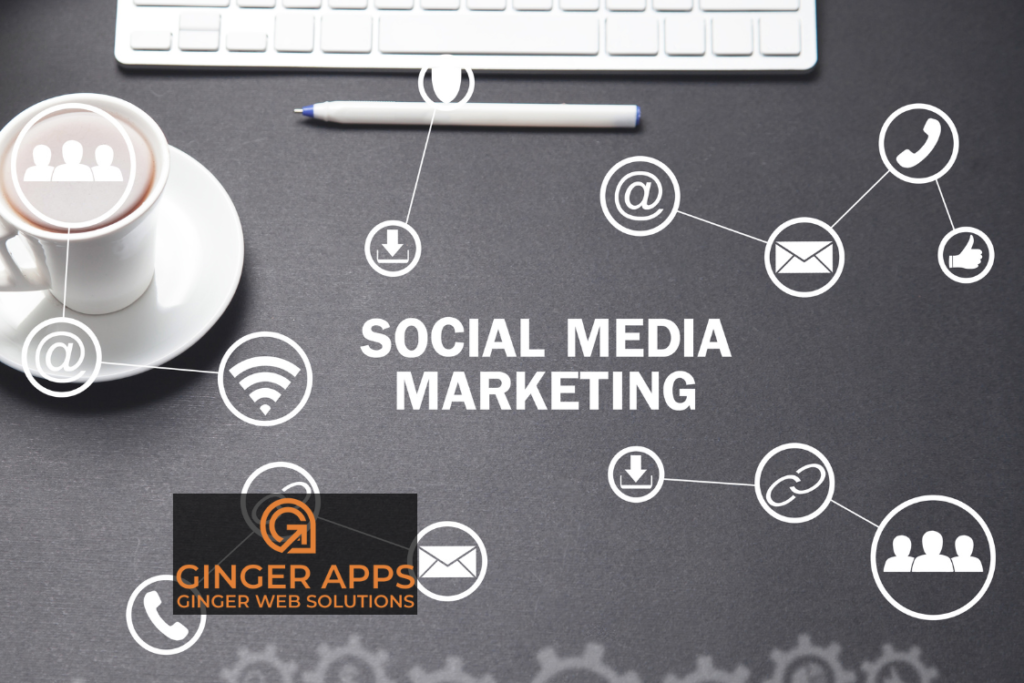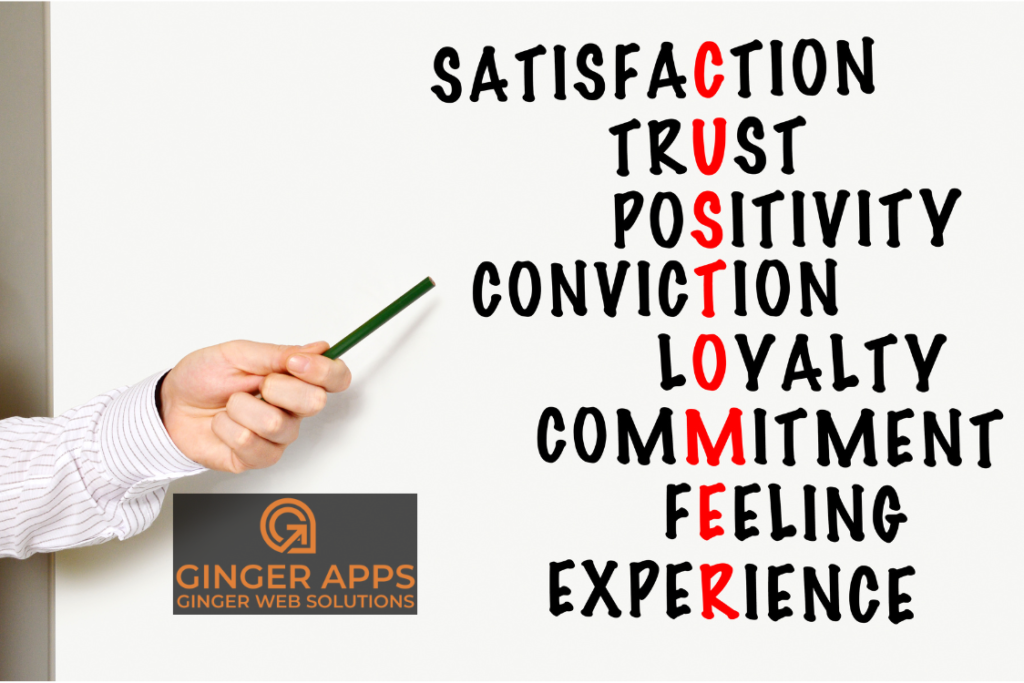From Clicks to Customers:
Unlocking the Power of Your Website to Drive Business Growth


In today’s digital age, having a website is no longer enough to guarantee success for your business. As a business owner, you need to understand the power of your website as a marketing tool and how it can drive business growth. Your website has the potential to convert casual visitors into loyal customers, but only if you know how to harness its power.
In this fast-paced world, where attention spans are shorter than ever, it’s crucial to optimize your website to not only attract clicks but also to convert those clicks into customers. This is where the art of conversion optimization comes into play. By strategically implementing SEO techniques, creating compelling content, and optimizing your website’s user experience, you can unlock the true potential of your website and transform it into a powerful tool for driving business growth. Join us as we delve into the world of website optimization and discover how you can turn clicks into loyal customers.
The Importance of a Business Website
Having a business website is no longer optional; it’s a necessity. In today’s digital world, consumers expect to find businesses online. Whether you run a small local business or a large multinational corporation, having a website allows you to reach a wider audience and establish your online presence. A well-designed and professional website can build trust and credibility with potential customers, making it more likely for them to choose your products or services over your competitors.
A business website serves as a 24/7 virtual storefront, accessible to anyone with an internet connection. It provides a platform to showcase your products or services, highlight your unique selling points, and share your brand story. Additionally, a website allows you to gather valuable customer data and analytics, enabling you to make data-driven decisions to improve your business strategies and offerings. Overall, a business website is an essential tool for driving growth and staying competitive in the digital marketplace.
Optimizing Your Website for Search Engines
One of the key aspects of unlocking the power of your website is optimizing it for search engines. Search engine optimization (SEO) is the practice of improving your website’s visibility in search engine results pages. When your website appears higher in search engine rankings, it increases the chances of attracting organic traffic and potential customers.
To optimize your website for search engines, you need to focus on both on-page and off-page SEO techniques. On-page SEO involves optimizing elements within your website, such as meta tags, headings, keyword usage, and URL structure. By conducting keyword research and incorporating relevant keywords throughout your website, you can increase its chances of ranking higher in search results.
Off-page SEO, on the other hand, involves building high-quality backlinks from reputable websites to improve your website’s authority and credibility. The more quality backlinks your website has, the more likely it is to rank higher in search engine results. Additionally, creating valuable and shareable content can attract natural backlinks, further enhancing your website’s SEO.
By implementing effective SEO techniques, you can increase your website’s visibility in search engines, drive organic traffic, and ultimately convert those visitors into paying customers.
Creating Compelling and User-Friendly Website Content
Content is king in the digital world. Compelling and engaging website content not only attracts visitors but also keeps them on your website longer, increasing the chances of conversion. When creating website content, it’s important to understand your target audience and their needs. By conducting market research and creating buyer personas, you can tailor your content to resonate with your target audience and address their pain points.
Incorporating storytelling techniques into your content can also be a powerful way to engage your audience. By sharing your brand story and highlighting the benefits of your products or services, you can create an emotional connection with potential customers, making them more likely to convert.
Furthermore, optimizing your content for readability and user experience is crucial. Break up your content into shorter paragraphs, use subheadings to make it scannable, and incorporate relevant images and videos to enhance engagement. Additionally, ensure that your content is mobile-friendly, as more and more users are accessing websites through their smartphones.
By creating compelling and user-friendly website content, you can capture the attention of your visitors, keep them engaged, and ultimately convert them into loyal customers.


The Role of Website Design in Driving Business Growth
Website design plays a crucial role in driving business growth. A well-designed website not only looks visually appealing but also enhances the user experience, making it easier for visitors to navigate and find the information they need. A cluttered and confusing website design can drive potential customers away, resulting in lost opportunities for conversion.
When designing your website, it’s important to keep your target audience in mind. Consider their preferences, demographics, and browsing habits to create a design that resonates with them. Use a clean and intuitive layout, choose a color scheme that aligns with your brand identity, and incorporate clear call-to-action buttons to guide visitors towards conversion.
Additionally, pay attention to the loading speed of your website. A slow-loading website can frustrate visitors and lead to high bounce rates. Optimize your images, minify CSS and JavaScript files, and use caching techniques to improve your website’s loading speed.
By investing in a well-designed website, you can enhance the user experience, build trust with your audience, and ultimately drive business growth.
User Experience and Website Design
User experience (UX) is a critical factor in turning clicks into customers. A seamless and intuitive user experience can significantly increase the chances of conversion, while a poor user experience can result in frustrated visitors and lost opportunities.
When optimizing your website’s user experience, start by focusing on website navigation. Ensure that your website is easy to navigate, with clear and organized menus that guide visitors to the information they are looking for. Incorporate search functionality to make it easier for users to find specific content or products.
Furthermore, optimize your website for mobile devices. With the increasing use of smartphones, it’s essential to have a mobile-friendly website that offers a seamless experience across different screen sizes. Responsive design, which automatically adjusts the layout of your website based on the device being used, is a must.
Another important aspect of user experience is page load time. A slow-loading website can lead to high bounce rates and frustrated visitors. Optimize your website’s performance by minimizing HTTP requests, compressing images, and leveraging browser caching.
By prioritizing user experience in your website design, you can create a positive and seamless journey for your visitors, ultimately boosting conversions and driving business growth.
Implementing User-Friendly Website Design and Navigation
When it comes to website design and navigation, simplicity is key. A cluttered and confusing website can overwhelm visitors and drive them away. By implementing user-friendly design and navigation principles, you can create a seamless browsing experience that encourages visitors to explore further and ultimately convert.
Start by organizing your content into logical categories and using clear and descriptive labels for your navigation menus. Make it easy for visitors to find what they are looking for by incorporating search functionality and providing clear pathways to different sections of your website.
Additionally, use whitespace strategically to create a clean and uncluttered design. Whitespace allows your content to breathe and makes it easier for visitors to focus on the most important elements of your website. Use contrasting colors and typography to guide users’ attention to key areas, such as call-to-action buttons or important information.
Furthermore, ensure that your website is accessible to all users, including those with disabilities. Incorporate alt text for images, provide captions for videos, and use descriptive headings to make your content more accessible to screen readers.
By implementing user-friendly website design and navigation, you can create a positive user experience that encourages visitors to stay on your website, explore further, and ultimately convert into customers.
Identifying Your Target Audience and Their Needs
To effectively convert clicks into customers, it’s essential to understand your target audience and their needs. By identifying your target audience, you can tailor your website content, design, and marketing strategies to resonate with them and address their pain points.
Start by conducting market research to gather data on your target audience’s demographics, preferences, and behaviors. This can be done through surveys, interviews, or analyzing existing customer data. Use this information to create buyer personas, which are fictional representations of your ideal customers. By understanding their motivations, challenges, and goals, you can create a website experience that speaks directly to them.
Additionally, leverage data analytics tools to gather insights on user behavior on your website. Track metrics such as bounce rate, time spent on page, and conversion rates to understand how visitors are interacting with your website. Use this data to identify areas for improvement and optimize your website accordingly.
By understanding your target audience and their needs, you can create a personalized and tailored website experience that resonates with them, ultimately increasing the chances of conversion.


Utilizing Email Marketing to Drive Website Conversions
Email marketing is a powerful tool for driving website conversions. By building an email list of interested subscribers, you have a direct line of communication with potential customers who have already expressed an interest in your products or services.
When implementing email marketing, it’s important to provide value to your subscribers. Offer exclusive discounts, educational content, or personalized recommendations to incentivize them to engage with your emails and visit your website.
Segment your email list based on user behavior, demographics, or preferences to deliver targeted and relevant content to each subscriber. Personalization can significantly improve engagement and conversion rates.
Furthermore, optimize your email design for mobile devices, as many users access their emails through smartphones. Use eye-catching subject lines, compelling content, and clear call-to-action buttons to encourage subscribers to click through to your website.
By utilizing email marketing effectively, you can drive traffic to your website, nurture leads, and ultimately convert subscribers into loyal customers.
Utilizing Social Media Marketing to Drive Website Conversions
Social media marketing is another powerful tool for driving website conversions. With billions of active users on platforms like Facebook, Instagram, and Twitter, social media provides a vast audience to promote your website and attract potential customers.
Start by choosing the right social media platforms for your business. Research where your target audience spends their time online and focus your efforts on those platforms. Create engaging and shareable content that drives users to your website. Use captivating visuals, compelling captions, and clear calls-to-action to encourage users to click through and explore your website.
Additionally, leverage social media advertising to reach a wider audience and drive targeted traffic to your website. Platforms like Facebook and Instagram offer powerful targeting options that allow you to reach users based on their demographics, interests, and behaviors.
Engage with your followers by responding to comments, messages, and mentions. Building a strong social media presence and fostering a sense of community can drive brand loyalty and ultimately lead to more website conversions. By utilizing social media marketing effectively, you can expand your online reach, drive traffic to your website, and convert social media users into loyal customers.


Conclusion and Final Thoughts
In today’s digital landscape, unlocking the power of your website is crucial for driving business growth. By optimizing your website for search engines, creating compelling content, and focusing on user experience and design, you can attract clicks and convert them into loyal customers. Additionally, leveraging email marketing and social media marketing can further drive website conversions and help you build a strong online presence. Remember, your website is not just a digital storefront; it’s a powerful marketing tool that can propel your business to new heights. So, invest the time and effort to unlock its true potential and watch your business grow.
Stay tuned, or follow me on Facebook and LinkedIn
Subscribe to my Newsletter here


